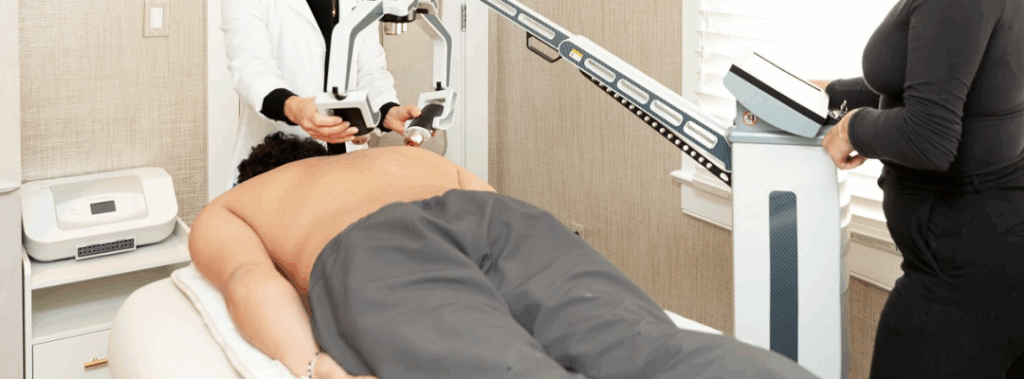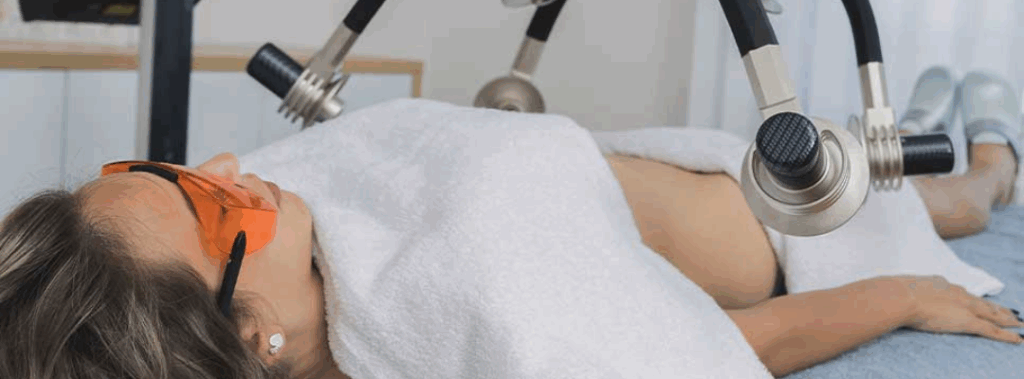
In the world of beauty and dermatology, the pursuit of youthful, radiant skin remains a top priority. Over recent years, the demand for advanced, non-invasive anti-aging treatments has surged, driven by the desire to achieve natural-looking results without the downtime associated with surgical procedures. At the forefront of this evolution is the burgeoning field of cosmetic dermatology, where innovative technologies are reshaping the landscape of skin care. Among these, low-level lasers are emerging as a transformative tool in the anti-aging arsenal, lauded for their remarkable ability to enhance skin elasticity and diminish fine lines and wrinkles.
Understanding Low-Level Lasers
Low-level lasers, also known as cold lasers or soft lasers, are a class of light-based devices used in various medical and cosmetic treatments. Unlike high-intensity lasers that generate significant heat and can ablate tissue, low-level lasers operate at lower power levels, making them safe for non-invasive skin treatments. These devices typically emit red or near-infrared light, which penetrates the skin without causing damage.
By comparison, high-intensity lasers, such as CO2 and erbium lasers, are often used for more aggressive resurfacing treatments. While effective, these lasers require longer recovery times and carry a higher risk of side effects. Other light-based technologies, like intense pulsed light (IPL) and LED therapy, also offer distinct benefits but differ in their mechanisms and applications. Low-level lasers stand out for their specific ability to stimulate cellular processes without causing thermal injury.
The magic of low-level lasers lies in a process known as photobiomodulation. When the laser light penetrates the skin, it is absorbed by cellular chromophores, leading to a cascade of biochemical reactions. This, in turn, enhances cellular function and promotes tissue repair.
In the context of skin care, low-level lasers influence both dermal and epidermal structures. They boost the production of collagen and elastin, two critical proteins that maintain skin elasticity and firmness. Additionally, these lasers enhance blood circulation and reduce inflammation, contributing to overall skin health and rejuvenation.
Benefits of Low-Level Lasers for Skin Care
Enhancing Skin Elasticity
One of the standout benefits of low-level lasers is their ability to improve skin elasticity. The biomechanical impact of these lasers on collagen and elastin fibers results in firmer, more resilient skin. Clinical studies and patient outcomes have demonstrated this effect, showcasing noticeable improvements in skin texture and elasticity after a series of treatments.
Reducing Fine Lines and Wrinkles
Low-level lasers are also effective at reducing fine lines and wrinkles. By stimulating dermal fibroblasts, these lasers enhance the production of the extracellular matrix, which helps maintain skin structure and smoothness. Clinical trials have provided robust evidence of significant reductions in wrinkle depth following low-level laser treatments.
Popular Low-Level Laser Treatments
Device Selection and Technology
The market offers a variety of low-level laser devices, ranging from portable handheld units to professional-grade systems used in clinical settings. Selecting the right device depends on factors such as treatment goals, patient needs, and budget considerations.
Technical specifications, including wavelengths, power settings, and treatment protocols, play a crucial role in determining the effectiveness of low-level laser treatments. Devices with adjustable settings allow for customized treatments, catering to the unique requirements of each patient.
Treatment Protocols
Conducting low-level laser sessions requires adherence to best practices to ensure optimal results. Key aspects include the dosage of laser energy, the duration of each session, and the frequency of treatments. Detailed procedural steps and patient management strategies are essential for successful outcomes.
Managing potential side effects is another critical aspect of low-level laser treatments. While generally safe, some patients may experience mild redness or discomfort. Identifying and mitigating these reactions through proper technique and post-treatment care is vital for maintaining patient satisfaction.
Comparative Analysis of Low-Level Lasers and Other Anti-Aging Treatments
To appreciate the strengths of low-level lasers, it’s essential to compare their efficacy with other popular anti-aging treatments. Chemical peels, microdermabrasion, radiofrequency (RF) treatments, and injectable fillers each offer unique benefits.
Chemical peels and microdermabrasion primarily exfoliate the skin, promoting cell turnover and improving texture. RF treatments use heat to stimulate collagen production, while injectable fillers provide immediate volume and smoothness. Low-level lasers, by contrast, offer a comprehensive approach, addressing both superficial and deeper layers of the skin. Combining low-level lasers with other treatments can yield synergistic effects. For example, pairing lasers with RF can enhance collagen remodeling, delivering superior results.
Practical Considerations for Implementation in Practice
Integrating low-level lasers into aesthetic and dermatological practices requires careful planning. Steps include selecting suitable devices, training staff, and establishing protocols to ensure consistent results. Operational considerations, such as space requirements and patient flow, also play a role in successful integration.
Conducting a cost-benefit analysis helps determine the financial viability of adopting low-level laser technology. While the initial investment may be significant, the potential revenue and patient satisfaction can justify the expenditure.
Effective low-level laser treatments begin with thorough patient assessments. Criteria for selection include skin type, aging concerns, and overall health. Customizing treatment plans based on individual needs enhances outcomes and builds patient trust.
Comprehensive consultations and informed consent are crucial components of patient care. Clear communication about expected results, potential risks, and post-treatment care ensures that patients are well-prepared and satisfied with their experience.
The Future of Low-Level Laser Therapy for Skin Care
The future of low-level laser therapy (LLLT) in skin care looks incredibly promising as advancements in technology and growing clinical evidence continue to highlight its efficacy and safety. This non-invasive treatment harnesses the power of photobiomodulation to stimulate cellular processes, promoting collagen production and improving skin elasticity. As research deepens, LLLT is expected to become an even more integral part of anti-aging regimes, offering a pain-free, low-risk alternative to traditional invasive procedures.
Its ability to reduce fine lines, wrinkles, and improve overall skin texture without downtime will drive its popularity among both practitioners and patients. With continued innovation, LLLT is poised to expand its applications, providing tailored, effective solutions for a wider range of skin concerns, cementing its role as a cornerstone in modern dermatology and aesthetic care.
Conclusion
Low-level lasers represent a significant advancement in the field of anti-aging skin care. Their ability to enhance skin elasticity, reduce fine lines and wrinkles, and deliver long-lasting results makes them a valuable addition to any aesthetic practice. Dermatologists and aestheticians should consider integrating low-level lasers into their treatment offerings, keeping abreast of ongoing research and technological developments.
For those interested in further exploring the potential of low-level lasers, attending workshops and training sessions is highly recommended. The future of skin care is bright, and low-level lasers are poised to play a pivotal role in helping individuals achieve ageless beauty.



